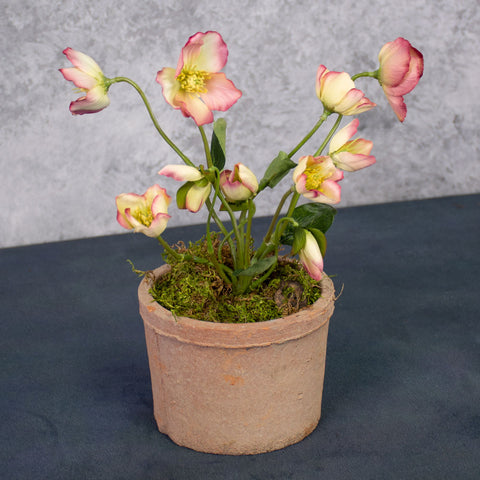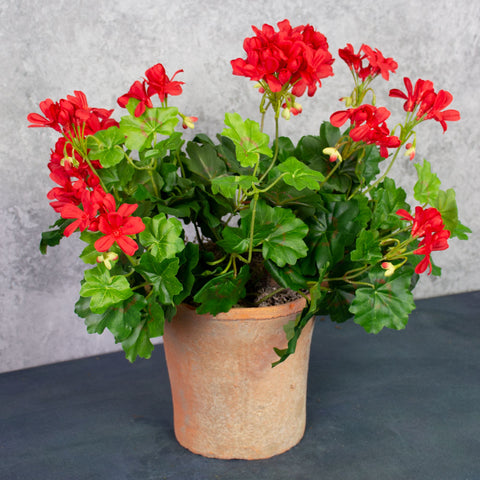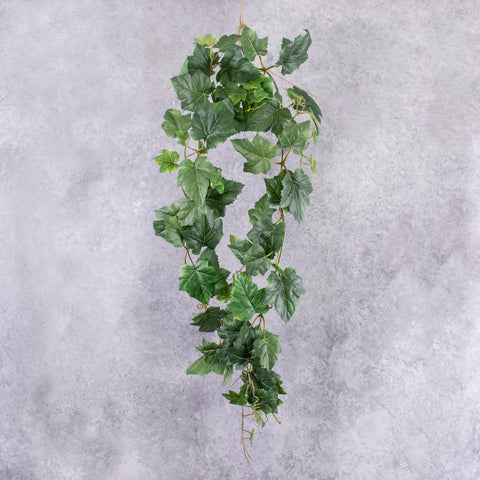Artificial plants have come a long way, but even the most realistic designs need a little help to look truly lifelike.
It doesn't matter if you're styling a home interior, retail display or event space; knowing how to make fake plants look real can transform the overall effect. From shaping and cleaning to clever lighting and mixing with live foliage, the smallest details make the biggest difference.
Here are seven expert tips to help you elevate your faux greenery and create displays that feel effortlessly natural.
1. Use High Quality Foliage and Flowers
The most effective way to make artificial plants look real is to start with the right ones. Not all faux greenery is created equal, and choosing high-quality pieces lays the foundation for a natural-looking display. Look for artificial plants with realistic colouring and texture.
Subtle variations in leaf tone, a matte or slightly veined finish, and natural asymmetry in shape will all help the plant appear more lifelike.
Materials matter, too. Silk and latex-style leaves tend to offer the most realistic movement and finish, while higher-end plastic plants can work well when placed in the right setting. Plants with wired stems give you the flexibility to bend and shape them into more natural forms, which is key for convincing styling.
2. What To Put In The Base Of A Fake Plant
You can make an artificial plant look more realistic by finishing the top of the pot with natural-looking materials.
Soil may seem like the obvious choice, but it can be messy and impractical. Instead, try dressing the base with small stones, sand, or preserved moss pieces to add texture and visual interest.
The container itself also plays a key role in enhancing realism. Choosing a ceramic pot, decorative vase or tactile planter can shift the focus away from the base of the plant and help reinforce the illusion. A well-chosen vessel supports the overall styling and subtly suggests the plant is real.

3. Shaping and Staging Artificial Flowers, Leaves And Foliage
Artificial flowers and foliage are often tightly packed and flattened during manufacturing and transport. Once unpacked, they can appear stiff or unnatural at first.
To help faux stems look more lifelike, it's important to take time shaping and staging them. Gently bend wired stems and fan out leaves to mimic the natural flow of fresh flowers. The more organic they appear from a distance, the more convincing they'll be up close.
Need styling tips? Read our guide to arranging artificial flowers for expert techniques and inspiration.
Trim and Open
Separate and fan out each stem, flower and leaf to create movement and depth. If the arrangement looks too dense or symmetrical, snip away a few smaller stems or leaves to give it a more natural silhouette, just take care not to overdo it.
Many artificial stems contain wire, which makes shaping easier but cutting trickier. Avoid using standard scissors; opt for strong snippers, wire cutters, or secateurs to trim safely and neatly.

Bend and Flex
To add realism, adjust the angle of the leaves and flowers so they face in slightly different directions. This asymmetry mimics how plants grow in real life. Some stems may resist movement, especially if they've been stored tightly for a while.
Steam
If your foliage is crumpled or difficult to shape, try steaming it gently to relax the material. Hold the plant over a clothes steamer (or use a hairdryer on the lowest heat setting) to soften the leaves and stems, then reshape by hand.
Always wear protective gloves, and avoid applying heat for too long. Both steam and hot air can damage delicate materials if overused.
Tape and Wire
For stubborn stems that won't hold their shape, insert florist's wire into the stem or wrap it around the outside. If the wire is visible, disguise it with coloured floral tape that blends with the foliage.
4. Use Shine to Make Leaves More Realistic
The surface finish of faux leaves plays a big role in how convincing they appear. Some artificial foliage arrives looking overly glossy, while others seem too flat or dull. With a few simple adjustments, you can achieve a natural-looking balance that suits your space.
If Your Leaves Look Too Dull
Artificial plants often arrive with a powdery or matte residue from the manufacturing process. To revive a natural glow, start by lightly misting the leaves with water. This helps replicate the soft sheen of morning dew on real foliage.
For non-porous surfaces, a gentle wipe with a damp sponge can lift the finish. For a longer-lasting result, apply a light coat of hairspray or a specialist artificial plant spray. These not only add subtle shine but also help to repel dust, making cleaning easier over time.
If Your Leaves Are Overly Shiny
Some faux plants come with a plastic-like gloss that catches the light in unnatural ways. To reduce excess shine, wipe the leaves with a damp cloth and dry with a soft, lint-free towel. This often removes the top layer of residue.
If needed, apply a matte-finish sealing spray or clear craft lacquer to tone down the gloss. These sprays are inexpensive and designed for delicate surfaces. Just take care not to overapply, as this can create a flat or chalky look.
Keep the Finish Looking Fresh
Whether you prefer a soft sheen or a matte effect, regular cleaning is essential. Dust can quickly dull the finish and make artificial plants look less realistic. Use a microfibre cloth or a specialist artificial plant cleaner to keep leaves looking fresh.
A quick burst of cool air from a hairdryer can also help remove loose dust without damaging finer detailing.
Read our guide on how to clean artificial plants to keep leaves looking fresh and dust-free.
5. Mimic Natural Lighting
Lighting plays a subtle but powerful role in making faux plants feel more lifelike.
One of the easiest ways to enhance their realism is to place them near natural light sources, like windowsills or bright corners. This helps create the kinds of soft shadows and depth that real plants naturally produce throughout the day.
If your space doesn't get much daylight, consider using warm light bulbs (around 2700 K) to replicate that natural golden tone. Steer clear of spotlights or very bright white lighting.
These can highlight the artificial sheen of plastic leaves and make even the best faux plants look out of place. Indirect light, especially when it changes slightly through the day, helps blur the line between real and artificial.

6. Apply UV Protection
While sunlight can make your artificial plants look more convincing, too much exposure can cause colours to fade over time. To keep your faux greenery looking vibrant, especially if it's positioned near a window or outdoors, apply a UV-protectant spray.
This clear coating helps maintain the flexibility and colour of leaves, preventing them from becoming brittle or bleached.
UV sprays are easy to apply. Just spritz evenly across the surface in a well-ventilated space. For best results, follow the instructions on the product and test a small, hidden area first to ensure there's no discolouration or residue.
For added peace of mind, consider choosing from our UV-resistant artificial plant collection, specially designed to withstand exposure to light without fading or becoming brittle.
7. Combine Multiple Types of Plants
One of the simplest ways to make artificial plants look more convincing is to mix them with live ones. When grouped together, the contrast is less noticeable, and the natural variation helps create the illusion that everything is real.
Try layering faux stems among live foliage on shelves, windowsills or in larger floor arrangements. The blend feels organic and works especially well in spaces where maintaining real plants isn't practical.
Trailing varieties such as artificial vines are particularly effective. Their flowing shapes naturally overlap with surrounding foliage, softening transitions and adding visual movement.
Tips For Decorating With Faux Vines

Artificial vines offer a low-maintenance way to add greenery to awkward corners or underused spaces. For a natural, polished finish:
- Secure them discreetly: Use built-in loops, clear hooks or soft florist's wire to hold vines in place. Wrap them around stair rails, mantels, or shelving brackets to mimic organic growth.
- Add balance and weight: When styling vines in a vessel, anchor them with floral foam and disguise the base with stones, preserved moss, or glass pebbles. This gives the arrangement structure while hiding its artificial roots.
- Use height and layers: Let vines cascade from higher points like wall hooks or shelf edges to introduce visual flow. Combine with upright faux plants or real foliage for a more dynamic effect.
- Vary textures: Mix in other faux stems or leaves with different shapes and finishes to reflect the diversity of natural arrangements.
With thoughtful styling, artificial vines can elevate a space adding a sense of life and softness where real plants might not thrive.
Ask the Expert: Rob Copsey on Making Faux Plants Look Real
How do you make fake leaves less shiny?
Wipe the leaves with a damp cloth to remove any surface residue, then dry with a soft, lint-free cloth. If the shine still feels unnatural, apply a matte-finish sealing spray or clear craft lacquer to tone it down.
How do you make fake leaves shinier?
Dullness can be from residues left over from the manufacturing process. To create a natural shine, wipe with water. To replicate an early morning dewy glow, use a spritzing bottle to spray a light mist over the foliage.
Hairspray or specialist artificial plant sprays are longer-lasting and can offer excellent results. It's also worth remembering that dust will diminish the desired shine of faux foliage, so don't let it build up. Specialist artificial flower cleaning products will also help prevent dust build-up.
How do you make a fake plant stem look real?
Fake plant stems can look rigid, uniform, and flat. Add life to them by manipulating the shape into more natural forms. Carefully use heat from a hairdryer to soften the stem material, and manipulate it into a more realistic shape.
How do you fluff fake plants?
"Fluffing" simply means reshaping artificial plants after they've been flattened for packaging or storage. Separate and spread out each stem, leaf, and bloom to restore a natural-looking silhouette. A little time spent posing your plant can make a big difference in realism.
How do you make fake vines look good?
Most artificial vines already have a natural look; they just need thoughtful styling. Drape them around shelving, railings, or wall hooks to add flow and movement.
Careful posing and staging of the leaves will cover up potentially unsightly stems and create a great finish. Draping around props can add movement and life where, in reality, there is none.
Can you spray paint fake greenery?
Yes, floral spray paints are a great way to customise or refresh artificial plants. Make sure the foliage is clean and dry first, then build up colour in light, even layers to avoid streaks or drips.
Take care to build up the product slowly rather than applying a mass of colour in one go. This minimises errors in colouration while preventing it from dripping and showing runs of colour.
Make Your Faux Plants Look Real Today!
Now you know how to style and get the best out of these lovely products, why not join the growing number of people who love faux plants?
At Atlas Flowers, we pride ourselves on selecting the best quality artificial plants and artificial flowers for home, commercial displays and more. We work with a number of suppliers to bring our customers a wide range of plants, vines and florals, to provide the best possible choice for homes, offices, businesses, or events.
If you're still not sure, look at our top reasons to choose artificial flowers to see if we can convince you further. Don't see what you're looking for? Please contact us to discuss your requirements, pricing, and bulk purchasing options.
